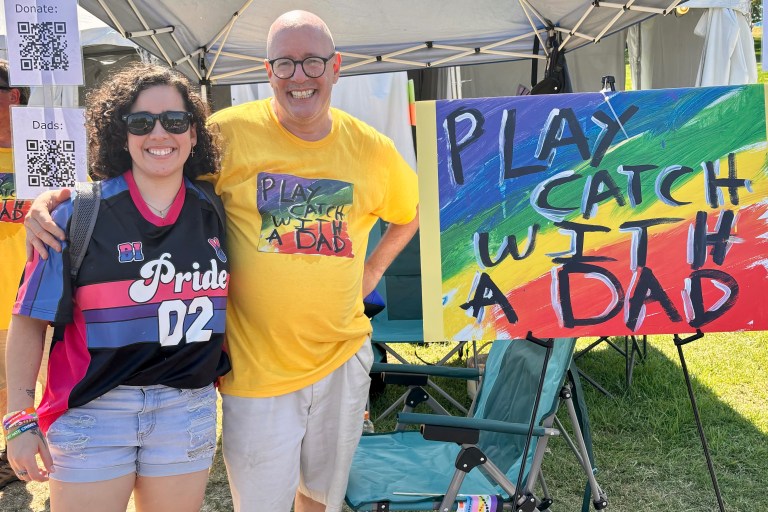Social media has given rise to numerous challenges purported to reveal the truth about romantic relationships — like orange peel theory, the idea that if your partner peels your orange without being asked, they truly care for you. Certain of these are more dubious than others, but one test that’s recently gone viral has some solid science behind it: the “bird theory” experiment.
An October TikTok post by user Rini Frey illustrates what the test entails. In the video, Frey stands in the kitchen with her phone camera facing her. “I saw a bird today,” she says to her husband, who’s offscreen. Without missing a beat, he responds, “You saw a bird?,” then asks, “What kind of bird?” And hurrah, he’s passed the test! He responded with curiosity to an ordinary, even mundane, observation.
@ownitbabe he was so excited 😭 #birdtheory #husbandwife #marriage
♬ original sound – Rini Frey
Bird theory is based on a concept called “bids for connection” that was conceived decades ago by relationship researcher John Gottman, who founded the Gottman Institute with his wife, Julie. Per the Institute, a bid is “any attempt from one partner to another for attention, affirmation, affection, or any other positive connection.”
Back in 1986, Gottman and his colleagues began researching relationships out of the University of Washington. In one landmark study, they set up their lab to look like a cozy home, and had 130 newlywed couples spend time together there, tracking their every interaction. Following up six years later, he found that couples who’d stayed married had turned toward each other’s bids for connection 86% of the time, while those who’d gotten divorced only did so 33% of the time.
In the book The Relationship Cure, Gottman writes of realizing — after watching tapes back of the newlyweds he observed — the importance of these bids: “Maybe it’s not the depth of intimacy in conversations that matters. Maybe it doesn’t even matter whether couples agree or disagree. Maybe the important thing is how these people pay attention to each other, no matter what they’re talking about or doing.”
@thegottmaninstitute Dr. John Gottman calls bids for connection the small, everyday moments that build or break a relationship. A shared laugh, a gentle touch, even a simple question or pointing out a bird. These are all ways we seek connection with our partners. The key? How we respond. Turning toward bids strengthens trust and intimacy, while turning away can create distance over time. Want to learn how to recognize and respond to bids for connection? Watch the full video on our youtube channel, link in bio! #Gottman #RelationshipGoals #BidsForConnection #RelationshipScience #TurningToward
♬ original sound – TheGottmanInstitute
In this sense, bird theory is rooted in real, observable results. But according to Carrie Cole, director of research at the Institute, we shouldn’t be quick to assign too much weight to any one interaction.
“I have some mixed feelings about it,” Cole explained to The New York Times of the recent trend. “We want couples to turn toward one another, and one way to do that is by making these little bids that are really about nothing: ‘Cool bird!’ ‘Look at that boat!’ ‘Nice car!’” But, she added: “What if your partner fails? Because we’re not perfect. Happily married couples are not perfect. What then?”
So, while it may be tempting to run out and immediately try bird theory (and who are we to stop you?), a healthier route might be to start intentionally creating and responding to genuine bids for connection. Below are some tips from the Gottman Institute on how to do that.
3 Relationship Tips to Strengthen Your Connection
Understand the Different Types of “Bids”
Just like how love languages can differ from person to person, what you and your partner view as bids for connection might not always be the same. That’s why it’s important to understand the many different types of bids. Thankfully, John Gottman created a list of bids for this purpose. It includes requests for help or information, requests to learn something together, and requests for affirmation regarding one’s accomplishments.
Practice Identifying Subtext
One interesting exercise suggested by the Institute to help you begin recognizing bids is to choose a TV show neither of you are familiar with to watch together with the sound turned off. Then, see if you can both pick up on what the characters are asking of one another using non-verbal cues only. Doing so may help you get better at identifying subtext — the words between the words. While a certain request or comment may seem literal on the surface, its subtext might be “I want to feel close to you” or “I need to feel supported.”
Pay Attention
Once you understand the types of bids and their subtext, the next step is to make sure you’re paying attention. To miss a bid is called “turning away” rather than “turning toward,” and it can sometimes feel more hurtful than “turning against,” which is responding in an overtly antagonistic manner.
Paying attention doesn’t mean watching your partner’s every move or even responding to every single thing they say (those of us with motor mouths know that’s far too much of an ask); rather, it’s understanding why something is being said. But if your wife lets out a long sigh or your boyfriend quietly says “wow” while reading something on his phone, those may be opportunities to notice and respond.
The Institute also advises taking an inventory of how often you and your partner turn toward or away from each other, so you have a more accurate picture of the state of your communication than one simple test can give you. And if your partner misses a bid, consider helping them out by saying, “I’m making a bid for attention now.”











